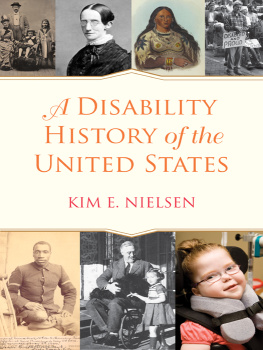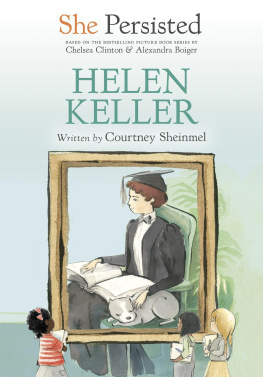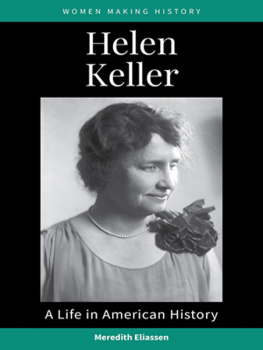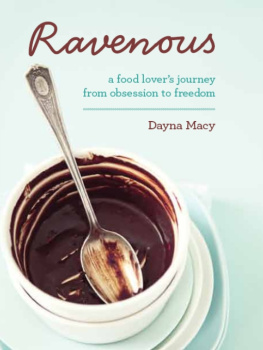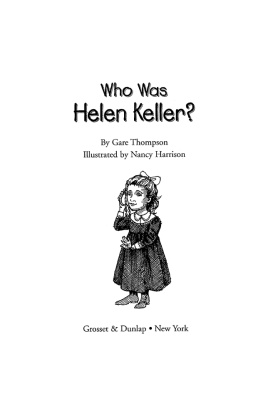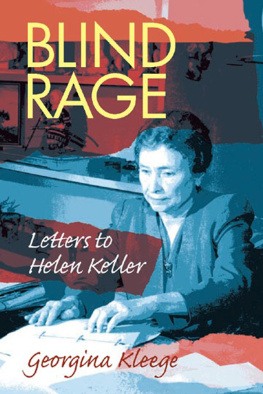

TO THOSE WHO HAVE GONE BEFORE:
Elijah Samuel Tuff, who continues to teach me;
Ken Cmiel, to whose scholarship, humanity,
and mentoring skills I aspire; and Susan Durrant, whom we miss immensely.
AUTHORS NOTE
A PROBLEM historians encounter while writing about women is that female subjects often change their names. In Beyond the Miracle Worker Ive chosen to refer to my historical subject according to her changing last name. She was Annie Sullivan (sometimes Annie Mansfield Sullivan) until her 1905 marriage and then became Annie Sullivan Macy. Thus I refer to her first as Sullivan, then Macy. I tend to use her and Helen Kellers first names when referring to their private lives, and last names when referring to public life.
CONTENTS
CHAPTER 1
Feeding Hills, 18661876
CHAPTER 2
Tewksbury Almshouse, 18761880
CHAPTER 3
Perkins, 18801886: Part One
CHAPTER 4
Perkins, 18801886: Part Two
CHAPTER 5
Becoming Teacher, 1887
CHAPTER 6
Tuscumbia, 18881891
CHAPTER 7
The Battle for Helen, Round 1, 18911894
CHAPTER 8
The Battle for Helen, Round 2, 18941900
CHAPTER 9
Radcliffe, 19001904
CHAPTER 10
John, 19041914
CHAPTER 11
On the Road, 19141924
CHAPTER 12
The American Foundation for the Blind, 19241930
CHAPTER 13
Concluding, 19301936
ITS TEMPTING to begin this book like a fairy tale. Once upon a time a poor, blind, and orphaned child named Annie magically grew into a happy, sighted, and successful adult woman. She became a miracle worker, lighting the intellectual fire and imagination of the deaf-blind girl Helen Keller at a water pump in the wilds of Alabama. We know this kind of story. Many of our books and movies, the morality tales and parables we tell, even the heroes weve created, are versions of the same inspirational tale. The cheerful and uplifting message is that yes, you too can conquer anything in order to do the impossible.
But I wont.
Any book about me, Anne Sullivan Macy reflected near the end of her life, must be full of contradictions. Beyond the Miracle Worker is a book that reflects these contradictionsthe contradictions of a delightful, gloomy, charismatically fascinating, and annoying woman who was neither blind nor sighted. Though she was born in 1866, her life is a surprisingly contemporary tale. It is the story of a caring, fiercely proud, and intelligent woman trying to forge meaningful human relationships despite her own ingrained flaws and wounds. It is the story of a woman deeply frightened of depending upon anyone else for emotional, economic, or social sustenance.
And yetin one of those contradictions that Macy warned us aboutshe made one notable exception: she did not hesitate to lean on her famous student, and later friend, Helen Keller. While the whole world assumed that Kellers deaf-blindness forced her to depend on her teacher, Anne Sullivan Macy, my research suggests that the reverse more accurately characterizes their relationship of nearly fifty years. Macy leaned on Keller, juggling her uneasy combination of emotional vulnerability and a fierce desire for independence. Her lifelong struggle with chronic illness and depression was far more debilitating than Kellers deaf-blindness. Keller provided love, acceptance, daily assistance, an income, and a home. Their deep friendship, and Macys willingness to allow herself to be dependent on Keller, gave meaning to Macys life. Macy regarded herself as a badly constructed human being, perceptively providing a way to understand the complex adult that the orphaned and deserted child of the Tewksbury Almshouse became. Yet, we shouldnt confine her to that characterization. As she herself admitted, some of us blunder into life through the back door. Though it may have been through the back door, and blunder she did, she entered into life fully.
Indeed, she saw the benefits of blundering, and faltering through life didnt bother her. If all people knew what was good for them and acted accordingly, this world would be a different world, though not nearly so interesting. But we dont know whats good for us, and Im spending my days in experimenting. The experiments are amusingand sometimes costly, but theres no other way of getting knowledge.
This remark characterizes Anne Sullivan Macy perhaps better than anything else. From childhood on, many others had held firm opinions about what was good for her. Those opinions could amuse her, wound her, or strengthen her, but in the end her determination to discover her own life path lay at the very core of her character. She knew she had made mistakessome of them profoundly painful. Whatever the benefit, whatever the cost, she had to discover for herself what was best. The marvel is the ferocity with which she thirsted to discover life, in its pains and its joys, for herself. As she said in concluding one of her 1916 letters to Helen, We have only to keep a stiff upper lip and do our damnedest.
* * *
AFTER COMPLETING two previous books on Helen Keller I swore I would never again write anything even remotely related to her. I started a project far removed from Keller. I informed everyone in my professional circle about that far-removed project in order to commit myself to it.
Then I reread Anne Sullivan Macys 1916 letters to Helen Keller. Macy had written them as she dealt with the illness that she thought would kill her. The letters reveal an introspective woman trying to understand her life. Vacillating between urgency and detachment, she reflected on pleasure, anger, complacency, and amazement. It struck me that her life embodied both contradictions and intensity: physical pain, emotional pain, isolation, friendship, joy, intellect, tenacity, success, and near constant self-doubt. Yet, as she thought about death, as she pondered her life, she took immense joy in the daily life of the Puerto Rican countryside where she was staying.
As I reconsidered Macy, I became convinced that I, and nearly everyone else, had shortchanged the woman known only as the teacher of Helen Keller. A new biography of Anne Sullivan Macy is greatly needed, not only to do justice to her and to provide a peephole into Keller and Macys multifaceted, and often surprising, friendship, but also because our cultural memory mythologizes and simplifies Macy as a straightforward educational superhero. She deserves more.
In addition, the increasing but still slow integration of people with disabilities into education, the workplace, and the public world makes this project significant. Macys disability did not occur in a vacuum, isolated and abstract. Her daily experience of it was often defined by contextby institutions, by the expectations of others, and by the lack of social welfare support. Her life story, particularly when placed alongside that of Keller, reminds us of the diversity of disability experiences historically and todayand of the multiple ways that we, as individuals, as institutions, and as a country, contribute to the disabling nature of physical and mental impairments.
Surprisingly, telling the life story of Anne Sullivan Macy with her as the central figure is a markedly new strategy. Numerous Keller biographies, both older and more recent, discuss Macy but primarily as an ancillary figure to the real star of the story. These include Joseph P. Lashs


